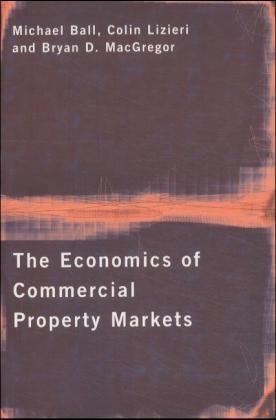Read more
Informationen zum Autor Michael Ball is an Australian author with a past as intriguing as his books. Through 11 years as a military intelligence analyst and his current role at Disaster Relief Australia, Michael has encountered an incredible range of people with extraordinary experiences. These encounters fuel his writing, which delves into the gritty realities of hidden worlds, the tough decisions made by the few for the good of the many, and the power of resilience and determination over intellect or skill.Through his stories, Michael explores themes of resilience and agency, always reminding readers, "It is never too dark to dream, nor too late to step foot on your own path." Klappentext This new text provides a rigorous analysis of real estate markets. Three main sections cover: microeconomics of property markets the macroeconomics of commercial property the financial economics of property Global empirical examples illustrate the theories and issues. This often complex area is made accessible: each chapter contains a boxed summary and questions for self-testing or discussion. Zusammenfassung This new text provides a rigorous analysis of the economics of real estate markets. It goes beyond the often descriptive nature of much property market analysis to focus on important theoretical principles. Inhaltsverzeichnis Part 1: Introduction. Prologue 1. Introduction Part 2: The Micro Economics of Property Markets 2. The Consumption of Commercial Property 3. The Location of Commercial Property 4. The Production of Commercial Property 5. Rent in the Commercial Property Market Part 3: The Macroeconomics of Commercial Property 6. Property Macroeconomics 7. Short Cycles in Property Markets 8. Short Term Property Forecasting 9. Property Investment and Economic Growth Part 4: The Financial Economics of Property 10. Property Assets and Investment Vehicles 11. Valuation, Pricing and Performance Measurement 12. Indirect Investment, Finance and Funding of Property 13. International Property Markets Part 5: Conclusions 14. Conclusions ...

